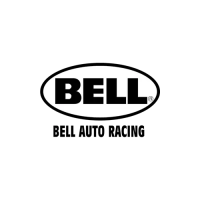OPERATION
OPERATING INSTRUCTIONS
• Whenever possible reverse park. This aids main-
tenance and reduces the likelihood of accidents.
• Trainers are only allowed on machines provided
with a trainer seat and with the approval of site
management.
• Always wear the seat belt when operating the
machine.
• Check continuously that no personnel are near
the machine.
Daily Walk Round Check Before
Operating
The Daily Walk Round Check must always be car-
ried out before operating the machine at the begin-
ning of a work shift or after a change of operator
during a shift.
The operator starts his check at the left of the ma-
chine and walks around the machine in a clockwise
direction.
The machine must be parked in the straight ahead
positiononfirm,levelgroundwiththebindownand
the park brake applied.
It is recommended that the machine is thoroughly
washed before starting the Walk Round Check.
The following is a list of the tasks required in the
Daily Walk Round Check. For a more detailed de-
scription of the tasks refer to the Daily or 10
Hourly Service Checks in this Manual.
The service decal located on the side of the cab
lists the scheduled service needs (maintenance
schedule) and is useful for locating the items.
Refer to next chapter, Operating Instructions - Starting
the Engine, for accessing the Daily Checks menu on the
MDU and for details on warnings about any service which
may be due.
1. Raise the bonnet and check the condition of the
lifting strut, pivots and restraining straps.
2. Check the machine for oil leaks, especially in
the vicinity of the transmission.
3. Check the condition and tension of the alterna-
tor belts.
4. Check for loose, frayed or corroded connec-
tions in the wiring harness.
5. Check the engine mountings and cab mount-
ings are secure and the rubber elements are
not damaged.
6. Ensure that all the hose connections are tight
and inspect for leaks, cracks or chafing
damage.
7. Check that the exhaust connections, exhaust
brake valve and actuator are secure.
8. Check that the batteries are secure and clean
and the connections are tight.
9. Check that the hydraulic motor driven fan and
cooler fins of the hydraulic oil cooler are not
damaged.
10. Check that the hydraulic oil cooler fins are not
restricted.
11. Check the cooling pack for cleanliness and en-
sure there are no restrictions to the cooling
function.
12. Check the security of the cooling pack assem-
bly and inspect for leaks.
13. Inspect the air cleaner assembly for damage
and security.
14. Check the engine oil level.
15. Check the engine coolant level.
16. Drain the fuel/water separator filter.
17. Inspect the suspension struts for leaks and
sandwich blocks for damage.
18. Check that the steering cylinders are secure.
19. Check the transfer case oil level.
20. Ensure that the transfer case mountings are se-
cure and undamaged.
21. Check the hydraulic fluid level.
22. Lubricate as required.
23. Check auto greaser reservoir level (If
equipped).
24. Check all lubrication points for proper
lubrication.
25. Inspect the park brake disc pads linings.
26. Check the axles and components (trailing arms,
stabiliser links and sandwich blocks) for leaks,
damage and security.
27. Ensure that the drive shaft assemblies are
secure.
28. Check the wheels, wheel nuts and components
for damage and security.

